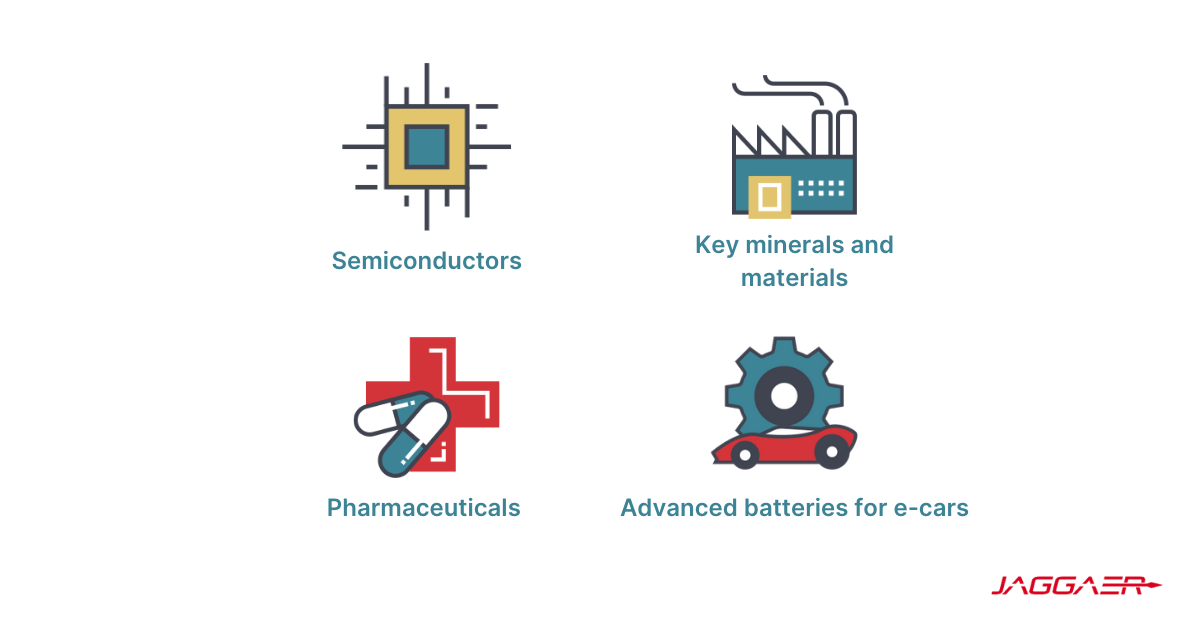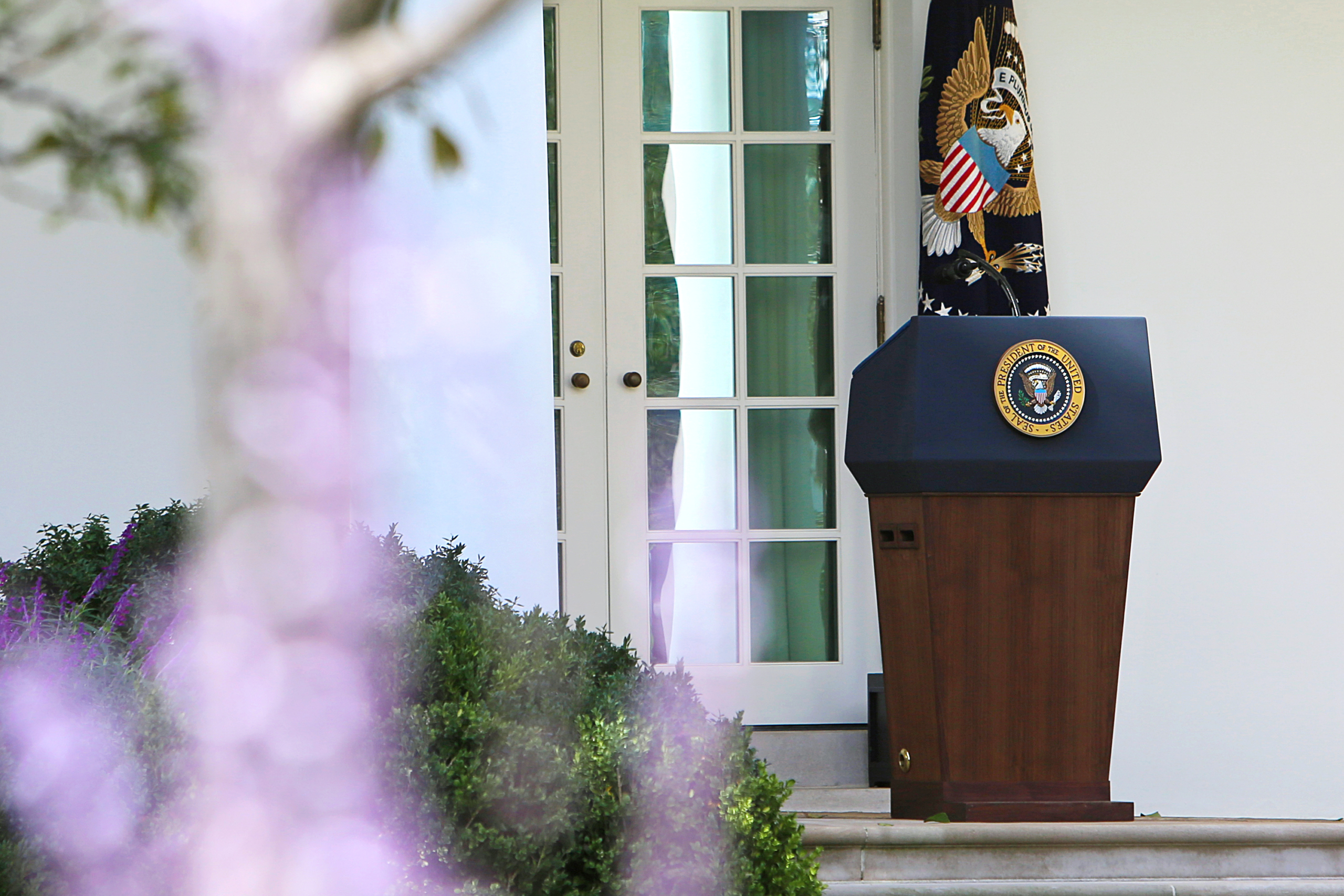In February 2021, due in large part to the continued fallout of the Coivd-19 pandemic, U.S. President Joe Biden signed an executive order ordering a 100-day review of the supply chain associated with semiconductors, rare earths, pharmaceuticals, and advanced batteries.
Along with these short-term reviews there is also a longer initiative to get a broader picture of U.S. supply chains and the various industrial bases.

While most agree that this review was sorely needed, there’s certainly no shortage of supporters and pundits alike when it comes to the details.
There’s no doubt that more will continue to be said on this order and subsequent initiatives, but supply chain leaders around the United States have already begun assessing the positives and negatives, as well as planning for the ripple effects that often follow these types of policy shifts.
Several supply chain experts we spoke to gave their insight and opinions on what Biden’s executive order means for the future.
Building on the Past
It’s not a new idea for a new President to take office and sign an executive order to assess and make changes to U.S. supply chains and industrial bases, in particular when it comes to the defense industry.
When President Obama was in office, he implemented the Sector-by-Sector, Tier-by-Tier assessment initiative. When President Trump took office, he signed Executive Order 13806, which brought in hundreds of experts to analyze the defense and manufacturing industrial bases to provide a comprehensive assessment.
What makes this order slightly – but importantly – different, is that Biden chose to build on this existing report instead of starting from scratch.
This in and of itself is a step in the right direction. The prior report provides valuable insight and also provides a benchmark to measure progress and changes from. But even with this baseline, President Biden still needs to first identify the problems before any changes can be made.
Roger Blumberg, VP of Corporate and Product Marketing at JAGGAER said “He can’t fix what he doesn’t know. These reviews mark the first step for what looks to be a shift towards risk management and supply chain visibility, which is sorely needed right now.”
Blumberg went on to discuss Section 1502 of the Dodd Frank Act, saying “My initial thoughts went back to that. It proved to be a huge shift in the policies and focus of everyone working in the Supply Chain and Procurement industry, and right now, this feels like something that will have that sort of broad impact.”
What’s Already Happening?
The 100-day review is still in the early days, but it is expected to confirm what many already know: the U.S. has become too reliant on imports, and single, large suppliers.
More near shoring and reshoring is needed along with an extensive look into supplier diversity and n-tier supplier management.
Biden’s order was signed just a few short weeks ago but it has already caused quite a stir in the supply chain community. Although met with almost equal amounts of optimism and skepticism as far as the scope is concerned, there has already been a domino effect of sorts, with companies both in the U.S. and abroad taking notice.
For example, Samsung has now announced that it plans to build a new $17 billion semiconductor and microchip factory in the U.S. in direct response to this executive order and the ongoing chip shortage.
But while much of the discussion is centered on reshoring supply chains, many experts believe that it’s being exaggerated to a degree. Of course, some things will come back into U.S. production, but to think that the U.S. will stop relying on foreign goods is not the case.
The executive director of a non-profit focused on strengthening U.S. manufacturing said “The focus is really going to be on strategic sourcing instead of reshoring. Looking into diversifying suppliers and moving away from single large suppliers.”
This executive also went on to say that he thinks there will be a lot on emphasis put on working with our allies and leveraging these partnerships in a strategic way.
The Positives
This executive order has come early enough into the Biden Presidency, has garnered enough attention, and has built on the work the Trump administration, all of which are signals pointing towards building long-term supply chain resiliency, even if this is just the beginning.
“This is something that’s sorely needed to better understand industrial capabilities and identify gaps or weaknesses in the nation’s supply chains. Insights from this effort will hopefully allow us to do what’s needed to mitigate issues and risks,” said the non-profit leader.
Kelly Barner, Managing Director of Buyer’s Meeting Point, echoed these sentiments. “Obviously, it is a very good plan to review our critical supply chains. I like that the Executive order calls for both specific product/material analysis and also sectoral analysis. This will help to get a broader picture to address risks that go beyond something like the semiconductor shortage.”
She went on to discuss a real potential for collaboration and partnerships, saying “In my mind, this could become a little like NASA – where government funded research helps private businesses advance. They will have access to information and resources that no company (or even industry) could muster on their own, really creating an opportunity for everyone to benefit from increased visibility.”
That is of course, assuming that all of the non-classified learnings will be shared. In many cases such as the defense industry or manufacturing sectors, supply chains are considered to be part of the “secret sauce” and will no doubt be protected to keep the competitive environment stable.
The Negatives
The common denominator in all of these conversations is one thing: the 100-day review.
A thorough supply chain review has been in the cards for some time, but the reality is that supply chains are incredibly complex. There are thousands of variables that need to be taken into account for any given production line, and that complexity is what covers up vulnerabilities.
“The concept of a 100-day supply chain review on this scale makes my head hurt. I don’t think they have any concept how big of a challenge they’re taking on,” Barner said. “I think they’ll also be shocked at how quickly these supply chains hit the edge of the U.S. We are far more dependent on other countries far earlier in our supply chains than they may suspect.”
One industry leader observed “In 100 days we’ll get some answers on capacities and capabilities, but for instance, the semi-conductor is just one part that needs to be addressed. There needs to be a look at the bigger electronics ecosystem, which includes printed circuit boards, components and much more. Only by looking at everything will we better understand our weaknesses and gaps, and that will take much longer than 100 days.”
Regardless of the first 100-day review there is also the sectoral part of the executive order. Organizations need to prepare for a drawn out and evolving process. Policy changes and supply chain gaps will continue to reveal themselves and we all have to be agile enough to respond in kind.
Even further, many of these supply chain gaps existed far before the pandemic. These are structural and cultural changes that the U.S. must address in order to regain its control over supply lines.
A prominent supply chain analyst said “Young workers must be educated and trained properly. Companies no longer rely on hammer and nail production lines, now it’s computer and machine programming. Right now, the U.S. is severely lagging in those areas. And that doesn’t even begin to touch on tax, tariff, and trade implications to incentivize companies to reshore production. This will all take years to accomplish, and systematic change is needed.”
What’s Next?
Moving forward, regardless of policies and reviews, there is clearly going to be a widespread focus on supply chain resiliency and risk mitigation.
Gaps and shortcomings were exposed by Covid-19 and will be brought back into the spotlight now with these new policies.
The biggest thing that I’ve gathered from speaking with supply chain experts is that to build a lasting and resilient supply chain, you need advanced visibility into your entire supply chain. Often, what you see initially is just the tip of the iceberg.
Up until the 1980s manufacturing plants had offices overlooking the floor to keep an eye on every product line. But now we’ve outsourced so much. Five station lines have become five companies, five buildings all over the world. Without visibility into what’s going on it’s impossible to manage risk, expectations and make changes. We need that insight and data connectivity in real-time to be able to properly manage supply chains and overcome the challenges we have now.
Finding the right tool that can offer you a 360° view of your supply chain and supplier ecosystem is arguably more important now than it ever has been before. Taking it even further, the ability to combine that visibility with tools and metrics to help mitigate risks proactively, apply supplier diversity best practices and manage n-tier suppliers is something that every company should be looking into right now.
Roger Blumberg of JAGGAER said it best “Disruptions are always hard to prepare for and even harder to predict. Especially with something to the magnitude of this pandemic. But as a country, we’re moving towards building that supply chain resiliency so the next time a disruption does happen, and sadly it will happen, we’ll be ready.”








